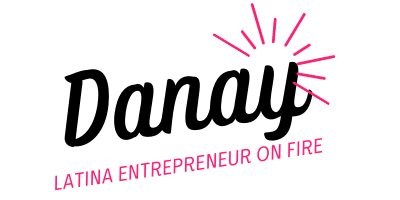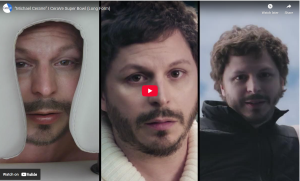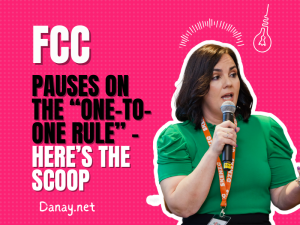Billions are wasted every year on media campaigns that look great on paper but fail to break through.
Why? Because they confuse “doing things differently” with true innovation.
As a media consultant, I’ve seen firsthand how often brands ask for innovation but fail to define what it actually means.
Without clarity, agencies default to recycled tactics that blend into the noise—and brands are left wondering why their investments underperform.
What is Innovation?
Innovation in media strategy isn’t about chasing shiny new tools or slapping a buzzword on a campaign. It’s about creating new value—connecting with audiences in fresh, relevant ways that drive measurable business outcomes.
Done well, it blends creativity, data, and bold thinking to do three things:
- Cut through clutter.
- Solve a real business problem.
- Deliver results that outpace the market.
Why Most Campaigns Fall Flat
I’ve seen brands pour millions into campaigns that look perfect on paper, big budgets, slick creatives, and all the right channels.
But too often, they fall flat because they lack that spark of originality.
The same recycled tactics, like generic influencer partnerships or cookie-cutter ad buys, don’t cut through the clutter.
Without innovation, even the best-funded strategies can fizzle, leaving brands with higher costs and low returns.
And, of course, the brand team is left frustrated with the lack of oomph.
After all, that’s really what missing innovation feels like.
One of the biggest culprits? Vague briefs. Too often, “innovation” isn’t clearly defined. For example, in 2025, optimizing for TikTok or Instagram search is no longer innovative—it’s table stakes.
If your agency is pitching partnerships as groundbreaking, you have a problem.
As a brand, you need to set clear expectations upfront:
- Baseline tactics: What’s expected, not innovative.
- Breakthrough tactics: Where you want your agency to stretch.
That clarity empowers agencies to push boundaries, instead of recycling the familiar.
Recent Innovative Media Strategy Campaigns (2024–2025)
CeraVe – “Michael CeraVe” (2024)
CeraVe leaned into internet culture with a tongue-in-cheek, conspiracy-style campaign that blurred the lines between social buzz and traditional media.
They tapped into a meme that actor Michael Cera had “created” CeraVe and fueled it with influencers, Reddit threads, and playful teasers leading up to the Super Bowl.
The big-game ad was the punchline: Michael Cera pitching CeraVe, only to be humorously corrected by dermatologists.
It was brilliant because it let the brand own the narrative, rather than chase it. By combining earned media (memes and speculation) with paid media (a Super Bowl spot), they drove 32 billion impressions and a 2200% surge in searches for the brand.
The campaign won the Cannes Lions 2024 Social & Influencer Grand Prix. Check out the LP here.
Mercado Libre – “Handshake Hunt” (2024)
Mercado Libre pulled off one of my favorite examples of turning media itself into an interactive channel. During Brazil’s biggest TV season.
They used AI to scan live programming for every handshake on screen, a nod to the brand’s handshake logo.
Each handshake triggered a QR code that appeared in real-time, unlocking contextual deals tied to the content (think sports gear during a soccer match, or a TV discount during a movie).
Instead of buying standard ad slots, Mercado Libre literally transformed shows into shoppable moments.
The campaign reached 80 million people and drove record-breaking Black Friday sales, proving how innovation can turn a traditional medium into a dynamic one.
This bold strategy earned the Cannes Lions 2024 Media Grand Prix. Check it out here.
Wieden+Kennedy Portland for DoorDash (U.S.)
Let’s look at another SuperBowl ad, since it kindof is the biggest ad day of the year.
DoorDash hijacked the 2024 Super Bowl by promising to deliver every product advertised during the game (from cars to candy, 2,468 items total) to one winner.
Their ad aired late, revealing a comically long promo code that viewers had to enter on a custom site (doordash-all-the-ads.com), sparking real-time social frenzy with 8 million+ entries and 11.9 billion impressions.
The innovation was in turning competitors’ ads into their own demo, using interactive digital media to prove DoorDash’s “anything” delivery promise at massive scale.
Check out the campaign details here.
Framework: How to Brief Agencies for Innovation
If you want innovation, you can’t leave it vague in the briefing stage. Here’s a simple framework:
- Define “baseline” vs. “breakthrough” – State clearly what’s table stakes and what’s considered innovative.
- Prioritize business outcomes – Anchor innovation to measurable goals (conversion, loyalty, market share).
- Allow room for experimentation – Give your agency the freedom to test bold ideas at small scale before rolling them out.
Lessons for Driving Media Innovation That Delivers Results
If you want innovation that matters:
- Start with Data, End with Creativity – Let insights reveal the gaps, then apply imagination to close them.
- Test Fearlessly – Innovation isn’t proven until it’s measured. Pilot bold ideas on a small scale, then scale what works.
- Stay Audience-Obsessed – If it doesn’t resonate with your audience, it’s not innovative—it’s noise.
Final Thoughts
Look, we all know that attention is scarce.
Innovation is the key to turning a good strategy into a great one.
And, most importantly, it paves the road to results, which is what the client really wants.
It’s not easy, but when you get it right, the results are fantastically worth it.







 Noticias Newswire
Noticias Newswire 

